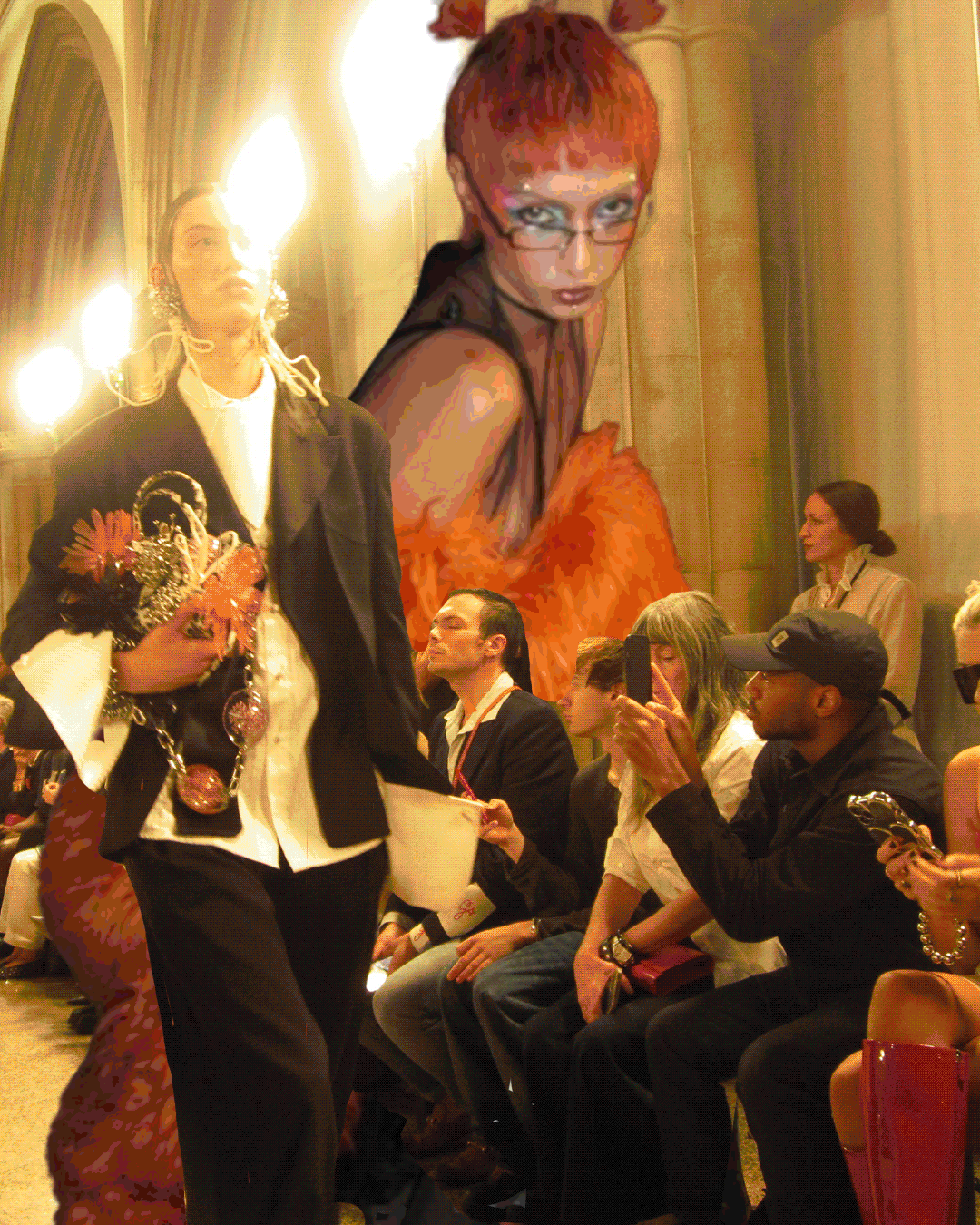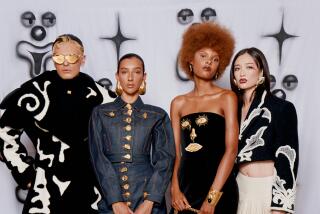MONUMENTAL
- Share via
JUYONGGUAN, CHINA — Even in a year of extravagant fashion spectacles, Fendi pulled off a feat, staging a show on what is indisputably the world’s longest runway: the 4,500-mile-long Great Wall of China.
Top that, Dior.
Fendi took luxury marketing to a new level last week, just as the Communist Party Congress was meeting to reaffirm one-party rule.
Such was the context for the Great Wall exhibition: Old World meets new affluence.
A police escort led guests about 30 miles northwest of Beijing to the mountainous Juyongguan Pass, where they entered a restored section of the Great Wall through the Cloud Platform.
As they passed under the giant white marble archway, etched with Buddhist bas-relief carvings, they were greeted by a phalanx of black-clad male attendants offering Fendi hand-warmers and, for the women, black cashmere scarves embroidered with the words “The Wall” in English and “Fendi” in Mandarin. The group sipped Champagne, snapped photos and sampled hors d’oeuvres, awaiting sunset and the start of the runway show.
“This is fantastic,” said Michelle Ong, a jewelry designer from Hong Kong. “Such a grand scale -- the Great Wall.”
The well-dressed attendees -- many choosing spike heels for the occasion -- gingerly mounted the steep, uneven stone steps to the top of the Great Wall, often with the help of male attendants positioned along the handrails.
“Despite the fact that I’m from Hong Kong, this is the first time I’ve ever done the Great Wall -- and I did it in heels!” said Hong Kong socialite Sharie Ross, who confessed she tucked a pair of ballet slippers into her Fendi bag for the descent.
The Great Wall -- not a single continuous structure, as some might think, but a network of walls and towers -- dates from about 2,500 years ago, when rival kingdoms built earthen fortifications to protect against invading armies. In modern China, foreigners are more than welcome to scale the ramparts -- with or without heels.
Historians say Emperor Qin Shi Huang mobilized 500,000 soldiers and conscripted laborers to connect segments of the wall into a fortress that would become known as Changcheng, or “long wall.” Fendi wouldn’t say how many conscripts it required to stage its chapter of the Great Wall’s history. But Chief Executive Michael Burke said the fashion house spent a year coordinating the spectacle with a Byzantine array of government offices that included the People’s Liberation Army, the Ministry of Culture, the Ministry of Antiquities and the mayor of Beijing.
“It’s never been done before, and I wouldn’t be surprised if this is the last time,” Burke quipped, as he excused himself for the second time during the interview to negotiate “a protocol issue” -- namely, whether Chinese Premier Wen Jiabao’s wife could be photographed attending such a nonproletarian event.
To be sure, China is worth the investment of patience and time. The country is the third largest market for luxury goods, and Burke agrees with analysts who expect it to surpass Japan within a decade. By the end of the year, Fendi will have 10 boutiques in nine cities throughout the country, thus the imaginative runway.
The serpentine Great Wall snaked up the mountainside, serving as a dramatic backdrop for the 200-meter runway located on a portion of the wall below.
“Bellissimo,” said one guest in Italian, upon seeing the Great Wall for the first time.
The models appeared through an arched passageway of a tower looming above the runway, as if magically transported from another time. They floated down a series of steps to the sloped runway, which they carefully navigated, backs arched to counterbalance perilously high heels.
Actresses Ziyi Zhang, Kate Bosworth and Thandie Newton and Miss Universe Riyo Mori were among the 500 invited guests, many of whom watched the show swaddled in minks against the brisk autumn chill as the models wore Fendi’s breezy spring collection and a few pieces created specially for the event -- lacquer red gowns and Fendi Baguettes decorated with silk tassels.
As the models walked side by side, the mountaintops were lighted with Fendi logos. It was a moment of symbolism for designer Karl Lagerfeld.
“It is especially important for Fendi,” he said, because it signifies the brand’s global appeal.
The party continued at the more contemporary setting of the Village at SanLiTun, a cosmopolitan shopping complex in downtown Beijing. As guests ate and drank in an open courtyard, they were surrounded by Fendi logos; gargantuan Fendi bags decorated with graffiti hung inside an eight-story glass and exposed-metal-beam tower, like some outsized retail display case. A replica of the flagship Palazzo Fendi was projected onto another wall, where eight barefoot dancers performed gravity-defying wall ballet while suspended by ropes.
The whole affair reportedly cost $10 million.
One Beijing native in attendance, Xiao Xiao, said she left China at age 12 and lived in Palo Alto before returning to her birthplace. The Fendi show -- together with the upcoming Olympics -- is a sign of the city’s arrival on the world stage, she said.
“It signifies a new reality. People want to be here.”
--
More to Read
Sign up for The Wild
We’ll help you find the best places to hike, bike and run, as well as the perfect silent spots for meditation and yoga.
You may occasionally receive promotional content from the Los Angeles Times.






